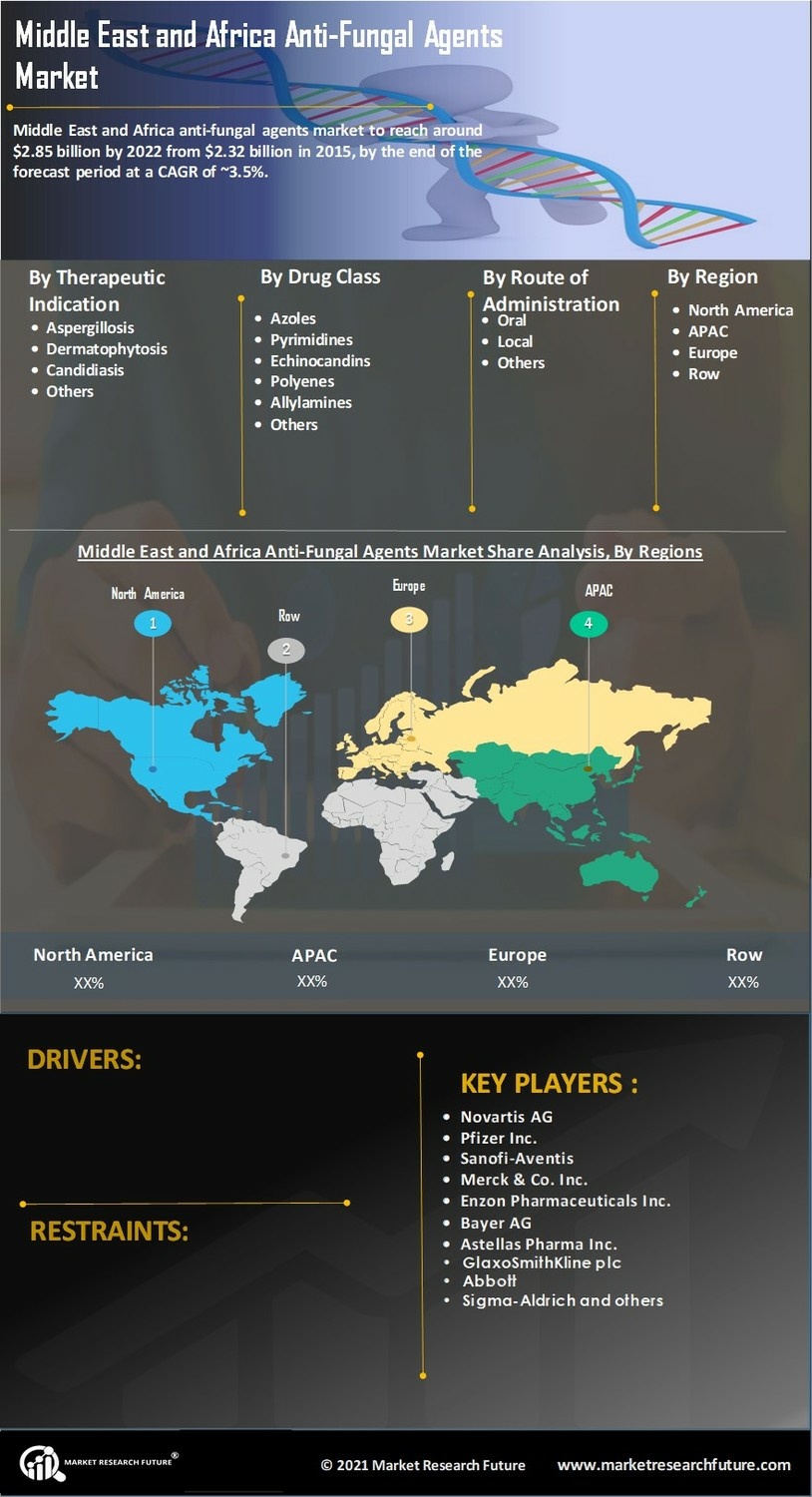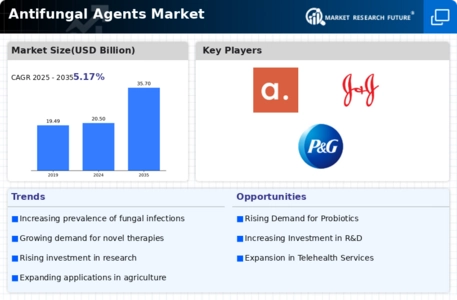Market Growth Projections
The Global Antifungal Agents Market Industry is projected to experience substantial growth in the coming years. With a market value anticipated to reach 20.5 USD Billion in 2024, the industry is on a trajectory towards 35.7 USD Billion by 2035. This growth is underpinned by a compound annual growth rate of 5.17% from 2025 to 2035. The increasing incidence of fungal infections, coupled with advancements in research and regulatory support, positions the market favorably for expansion. As the demand for effective antifungal therapies rises, stakeholders are likely to witness a dynamic and evolving landscape in the antifungal agents sector.
Growing Awareness and Education
Increased awareness and education regarding fungal infections and their treatment options are pivotal in shaping the Global Antifungal Agents Market Industry. Public health campaigns and educational initiatives led by health organizations have enhanced understanding among healthcare professionals and patients alike. This heightened awareness encourages timely diagnosis and treatment, ultimately reducing morbidity associated with fungal infections. As a result, the market is expected to expand, with projections indicating a growth to 35.7 USD Billion by 2035. The focus on education is likely to foster a more informed patient population, which could lead to increased demand for antifungal therapies.
Advancements in Antifungal Research
Innovations in antifungal research and development significantly influence the Global Antifungal Agents Market Industry. Recent advancements in drug formulation and delivery systems have led to the emergence of novel antifungal agents with improved efficacy and safety profiles. For example, the development of echinocandins and triazoles has revolutionized treatment protocols for invasive fungal infections. The ongoing research efforts, supported by various government health agencies, aim to address the challenges posed by drug resistance. As the market evolves, it is anticipated that the industry will witness a compound annual growth rate of 5.17% from 2025 to 2035, driven by these advancements.
Emerging Markets and Economic Growth
The expansion of emerging markets and overall economic growth contribute to the Global Antifungal Agents Market Industry. Countries with developing healthcare infrastructures are increasingly investing in antifungal treatments, driven by rising healthcare expenditures and improved access to medications. For example, regions in Asia and Africa are witnessing a surge in demand for antifungal agents as healthcare systems evolve. This trend is expected to bolster market growth, with the industry poised for a significant increase in revenue. As healthcare access improves, the market is likely to experience a robust expansion, reflecting the changing dynamics of global health.
Rising Incidence of Fungal Infections
The increasing prevalence of fungal infections globally is a primary driver of the Global Antifungal Agents Market Industry. Factors such as climate change, urbanization, and the rise of immunocompromised populations contribute to this trend. For instance, the World Health Organization indicates that invasive fungal infections affect millions of individuals annually, particularly those with weakened immune systems. This growing burden necessitates effective antifungal treatments, propelling market growth. As the market is projected to reach 20.5 USD Billion in 2024, the demand for innovative antifungal agents is likely to escalate, highlighting the urgent need for research and development in this area.
Regulatory Support for Antifungal Development
Regulatory bodies play a crucial role in facilitating the development and approval of antifungal agents, thereby impacting the Global Antifungal Agents Market Industry. Streamlined approval processes and incentives for research into antifungal therapies encourage pharmaceutical companies to invest in this area. For instance, the U.S. Food and Drug Administration has implemented programs to expedite the review of new antifungal drugs, particularly those addressing unmet medical needs. This supportive regulatory environment is likely to enhance market dynamics, fostering innovation and potentially leading to a broader range of antifungal products available to healthcare providers and patients.














Leave a Comment